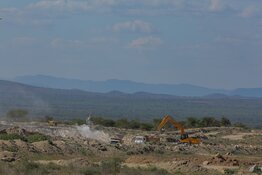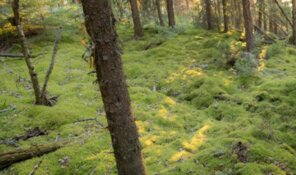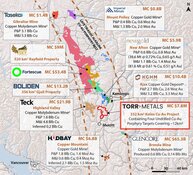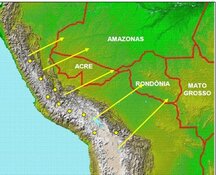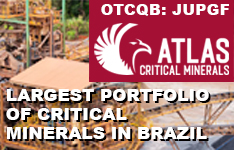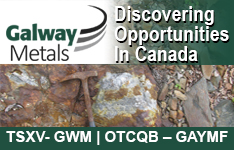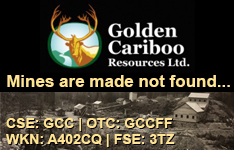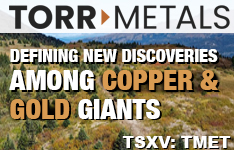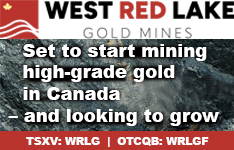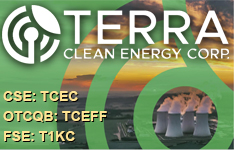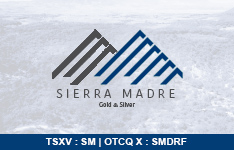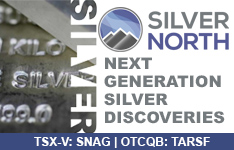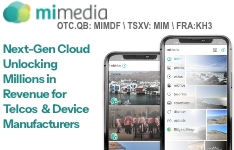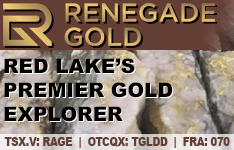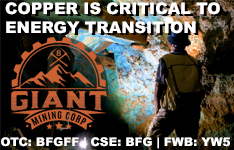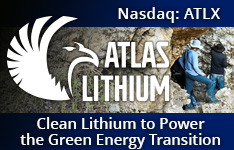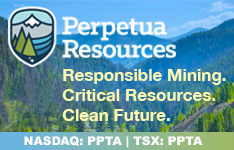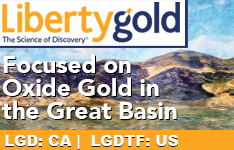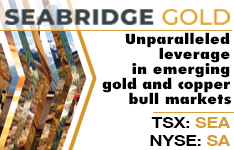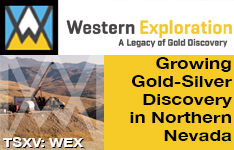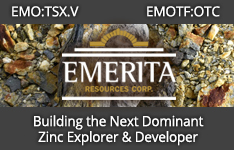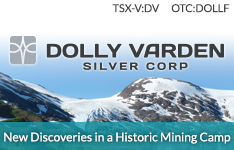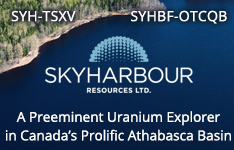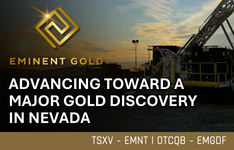Grassroots opportunities like this are rare in mining. Canary Gold Corp. (BRAZ:CSE; CNYGF:OTC) presents one of the most compelling exploration stories today. Located in northern Brazil near the Bolivian border, it sits where the Andes foothills meet the flat Amazon Basin.
For the past 15 million years, the Madeira River, an Amazon tributary, has transported gold particles from the Andes into this region. Over decades, artisanal miners have recovered millions of ounces, yet no one has fully explored the river's ancient channels — where gold may be concentrated under layers of soil and clay.
Canary Gold is the first to investigate these paleo-channels. Early fieldwork has already discovered visible gold in six of the first samples across a 2 km² area, offering strong validation. The question remains whether enough gold exists in economic concentrations to justify mining even part of their 150,000-hectare property. Exploration costs are low, and progress should be rapid.
Yes, this is high-risk, early-stage exploration. But the project's scale, simplicity, and location in one of the world's historically richest alluvial gold regions — the Madeira River Basin — make it an interesting opportunity.
A Once-in-a-Career Idea, 25 Years in the Making
This idea has been decades in the making, developed by geologists Jon Hill (Australia), Alan Carter (UK), and Andrew Lee Smith (Canada). Each brings geological experience.
Hill, working for AngloGold Ashanti, scouted all of Brazil for gold potential. While large mining companies ignored alluvial deposits as inconsistent for billion-dollar operations, Hill recognized scale, geological logic, and potential.
Over millions of years, the Madeira River carved a 400 km-wide corridor through the Amazon Basin, one of Brazil's richest gold-producing waterways. Over 7 million ounces have been recovered through artisanal mining, not including smuggled or unrecorded amounts.
The river's gold is famous enough to be featured on Discovery Channel's Parker's Trails. Now, envision the river's ancient paths over millions of years. These long-forgotten channels could hold significant gold deposits, now buried beneath clay and soil.
Canary Gold initially optioned nearly 700 km² (69,000 hectares) along an 80 km corridor south of Porto Velho, the capital of Rondonia. This land sits outside the current riverbed but may lie directly on top of old gold-bearing channels. The company has since added 90,000 hectares to its holdings.
Placer Gold — But Smarter
This isn't a Yukon-style pan-and-sluice operation. Canary Gold pursues placer mining at scale using modern geophysics, permitting, and exploration technology.
The key target is a consolidated layer of mineralized laterite known locally as Mocururu, found beneath 20–50 meters of overburden. This layer contains visible gold and heavy minerals. Its presence is confirmed across large portions of their claims using 15 km of tomography lines and ground-penetrating radar (GPR). Even the overburden itself, essentially hardened mud, often contains gold.
Mocururu is not hard rock; it's a 2–5 meter-thick consolidated sediment layer that is relatively easy to mine — if economic. If mineralization consistently measures 0.5–1.0 g/t Au, Canary Gold could uncover a world-class deposit at shallow depths of 30–60 meters.
Visible gold has already been found in six samples, strongly validating the theory.
Simple Geology, Massive Prize
This story excites because of the team and the geological logic:
- Gold originates from the Andes.
- The rivers transported it eastward over millions of years.
- Deposits were laid down repeatedly as the river shifted, evidenced by over 7 million ounces recovered from the Madeira River over decades.
- Most riverbeds have never been explored outside the current banks.
- Modern tools like radar and resistivity now allow these old paths to be mapped.
What's more, targets are shallow. Drilling is expected to average 50–70 meters, using sonic rigs that preserve sediment structure, critical for gold hosted in loose or semi-consolidated layers. This is 21st-century placer mining with district-scale potential.
Scale: The Big Difference
Canary has already mapped 30 km of preserved paleo-channel features. The company believes there are 20–30 more kilometers of prospective channels waiting for permits.
While Mocururu mining isn't traditional placer mining, gravity concentrators and similar tools may be used for testing and potentially for mining if economic deposits are found.
Canary Gold's play is a paleo-placer deposit, where gold accumulates in ancient riverbeds and conglomerates. The world's largest gold deposit, South Africa's Witwatersrand Basin, formed similarly. That deposit is older, deeper, and higher grade, but Canary's Madeira River project could still produce significant shallow, low-cost ounces.
Even with grades of 0.5–1 g/t over 2–5 meters, discovery costs per ounce could be very low, though the market may require extensive drilling (50+ holes) to appreciate the scale.
Risks
- Economic viability: Visible gold exists, but concentrations sufficient for a mine are unproven.
- Ownership and financing: The company must spend $5M to earn 49%, then conduct a PEA to reach 70%. Further funds will be required for vendor payments and exploration.
- Stock structure: Many low-cost shares exist from founders, vendors, and early seed rounds, affecting liquidity and valuation.
Exploration is inexpensive and rapid, with drilling at 70 meters allowing quick testing. If successful, the project would operate more like a moving quarry, back-filling as Mocururu is extracted.
The Team
- Alan Carter: Credited with five gold deposits (four in Brazil); six years with BHP and seven with Rio Tinto before leading exploration companies.
- Andrew Lee Smith: Mining Entrepreneur of the Year (Canada, 1994) for Beaufor and Sleeping Giant mines.
- Jon Hill: Sought-after independent geologist in Brazil; previously scouted the nation for AngloGold Ashanti.
With this team, strategic methodology, and large unexplored property, Canary Gold represents a rare, high-upside exploration opportunity.
A 'Speculative Buy'
My friend John Newell of John Newell & Associates believes Canary Gold is a Speculative Buy. He shared the paragraph and chart below on Canary Gold:
"Canary Gold has recently completed a bullish breakout from a multi-month symmetrical triangle formation, confirming a significant shift in market sentiment. After months of consolidation between roughly CA$0.26 and CA$0.34, the stock pushed decisively through upper resistance in late September on expanding volume, often an early indication of institutional or informed accumulation. Following the breakout, the shares pulled back modestly to test the former resistance zone, now acting as support near CA$0.35, before resuming their advance. This retest strengthens the breakout's validity and sets the stage for a continuation move toward the next resistance levels. Momentum indicators support the bullish outlook. The MACD has crossed firmly into positive territory, and both moving averages are trending upward with increasing separation. The RSI, currently in the low-60s, remains constructive and shows room to advance before reaching overbought levels. Volume patterns reveal clear accumulation, confirming improved investor participation. The measured move from the triangle pattern projects an intermediate-term target near CA$0.60, while the broader structural base suggests a longer-term "big picture" target in the CA$0.75–CA$0.80 range, contingent on sustained volume and favorable sector tailwinds. Overall, the technical picture supports a Speculative Buy for traders and investors seeking exposure to early-stage momentum within the junior gold exploration sector. Continued strength above CA$0.35 would maintain this positive bias, while a close below that level would warrant short-term caution."
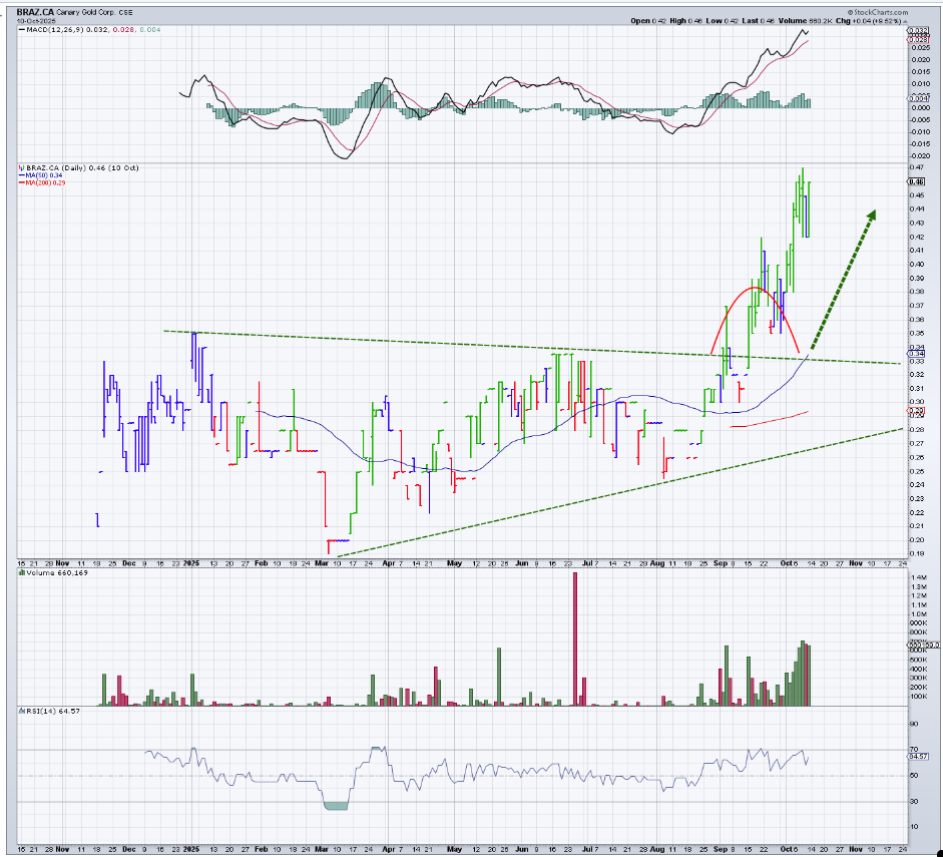
| Want to be the first to know about interesting Gold investment ideas? Sign up to receive the FREE Streetwise Reports' newsletter. | Subscribe |
Important Disclosures:
- Keith Schaefer: I, or members of my immediate household or family, own securities of: Canary Gold Corp. My company has a financial relationship with: None. My company has purchased stocks mentioned in this article for my management clients: None. I determined which companies would be included in this article based on my research and understanding of the sector.
- John Newell: I, or members of my immediate household or family, own securities of: None. My company has a financial relationship with: None. My company has purchased stocks mentioned in this article for my management clients: None. I determined which companies would be included in this article based on my research and understanding of the sector.
- Statements and opinions expressed are the opinions of the author and not of Streetwise Reports, Street Smart, or their officers. The author is wholly responsible for the accuracy of the statements. Streetwise Reports was not paid by the author to publish or syndicate this article. Streetwise Reports requires contributing authors to disclose any shareholdings in, or economic relationships with, companies that they write about. Any disclosures from the author can be found below. Streetwise Reports relies upon the authors to accurately provide this information and Streetwise Reports has no means of verifying its accuracy.
- This article does not constitute investment advice and is not a solicitation for any investment. Streetwise Reports does not render general or specific investment advice and the information on Streetwise Reports should not be considered a recommendation to buy or sell any security. Each reader is encouraged to consult with his or her personal financial adviser and perform their own comprehensive investment research. By opening this page, each reader accepts and agrees to Streetwise Reports' terms of use and full legal disclaimer. Streetwise Reports does not endorse or recommend the business, products, services or securities of any company.
For additional disclosures, please click here.



